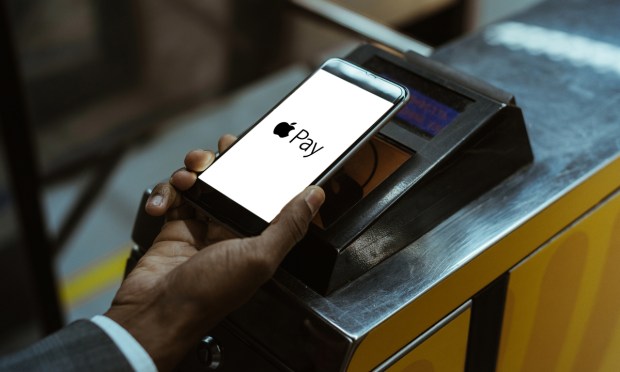
The first few days of Apple’s annual developer conference, stretching from Monday (June 10) to Friday (June 14), may seemingly be all about artificial intelligence.
But a set of announcements Tuesday (June 11) highlights some key ways the tech giant is stretching the reach of Apple Pay and Apple Wallet beyond the iPhone or credit and debit. By doing so, Apple will be expanding its services ecosystem beginning this fall, coinciding with releases of iOS 18 and iPadOS 18.
The payment functions are moving beyond the smartphone, where new features will be accessible via other Apple devices (such as the iPad), and Apple Pay is being made available for Windows computers and through Google’s Chrome browser. In those instances, then, Apple Pay becomes a payment option that can be used on PCs too.
Beyond the hardware and the operating system aspects, the ecosystem also will seemingly include more partners in a bid to move beyond the credit and debit cards that have traditionally been tied to Apple Pay. Banks will be able to offer financing options embedded in Apple Pay along with rewards points and programs.
Redeeming rewards for a purchase with Apple Pay will initially be available in the United States with Discover and Synchrony, as well as across Apple Pay issuers with Fiserv, Apple said in a Tuesday press release. Installments from credit and debit cards with Apple Pay will roll out starting in Australia with ANZ; Spain with CaixaBank; the United Kingdom with HSBC and Monzo; and the U.S. with Citi, Synchrony and issuers with Fiserv. Users in the U.S. will also be able to apply for buy now, pay later (BNPL) loans directly through Affirm when they check out with Apple Pay.
Additionally, Tap to Cash with Apple Cash lets users send and receive Apple Cash by holding two iPhone devices together.
Among the new financing options lies Affirm’s BNPL to be made available when users check out with Apple Pay.
“We’re excited to share that U.S. users checking out online or in-app with Apple Pay on iPhone and iPad will be able to apply to pay over time for eligible transactions with Affirm,” an Affirm spokesperson said in a statement provided to PYMNTS. “This provides users with additional payment choices and offers the ease, convenience and security of Apple Pay alongside the features users love in Affirm: flexibility, transparency and no late or hidden fees. We’ll plan to share more details at a later time.”
Apple’s moves essentially untether Apple Pay and the wallet functions from the iPhone — and to a broader range of devices. Consider the consumer who might have an iPhone wielded in everyday life but may have a laptop that’s a workhorse during the business day, or a Chromebook that’s dedicated to academics.
The PYMNTS Intelligence report “Apple Pay Use in-Store Gets Boost From Tap to Pay” found that roughly half of consumers who used a digital wallet in-store used Apple Pay. But that’s still a mid-percentage point share of overall purchases, so there is room to gain ground. The share of eligible in-store transactions with Apple Pay grew 24%, from 6.3% in 2022 to 7.8% in 2023.
Wall Street’s judgment on who’s up and who’s down in the wake of the announcement — a read-across on some competitive dynamics — can be seen in the stock action Tuesday. As of Tuesday afternoon, Apple and Affirm shares were up a respective 6% and 8%. PayPal, which PYMNTS Intelligence found was overtaken by Apple Pay as the in-store mobile wallet of choice, was down 3.5% in intraday trading.
Apple has noted in the past, per management commentary on earnings calls, that Apple’s services growth has been buoyant in part because of transacting accounts and paid accounts growth, which both stood at double-digit percentages year on year. Services growth accelerated to 14% year over year, to $23.9 billion, where that rate had been 11% in the most recent, second quarter of the fiscal year.
“We expect our services business to grow double digits at a rate similar to the growth we reported for the first half of the fiscal year, and we expect iPad revenue to grow double digits,” Apple Chief Financial Officer Luca Maestri said during the call.
By uncoupling Apple Pay and the digital commerce functions from the hardware (which declined in several categories year on year except the iMac), Apple is less reliant on new Apple-specific product sales to keep wallet installations and use on the upswing.